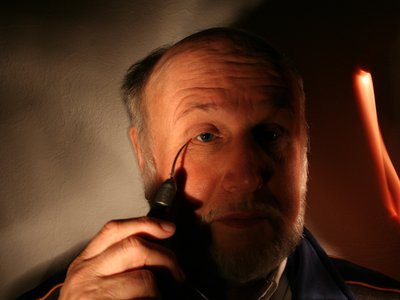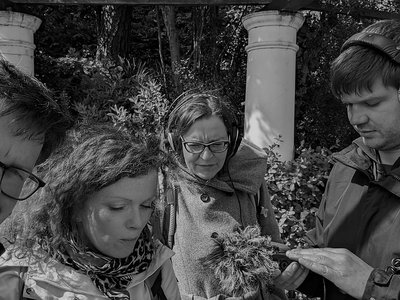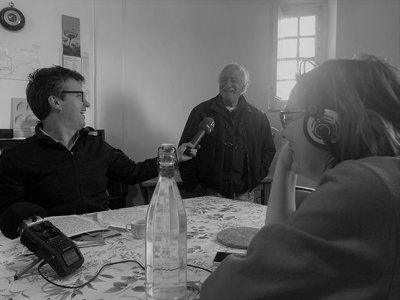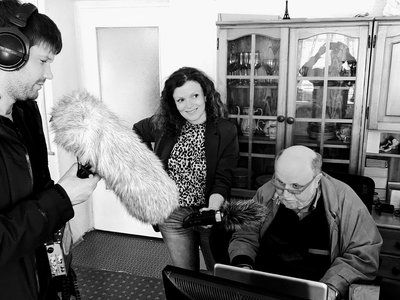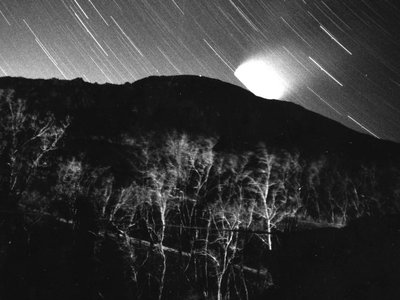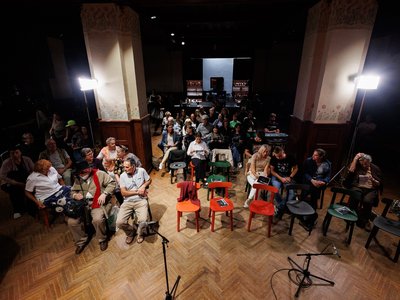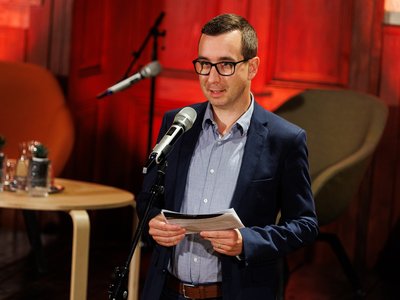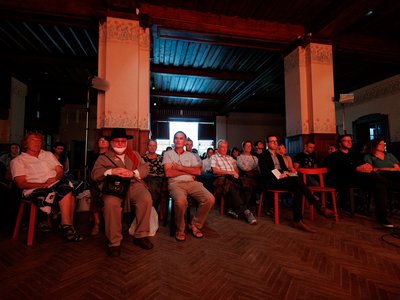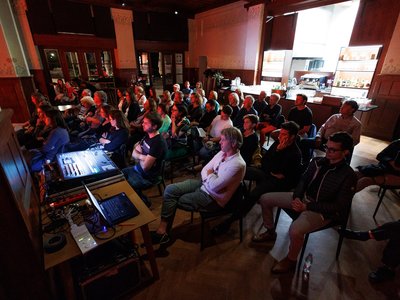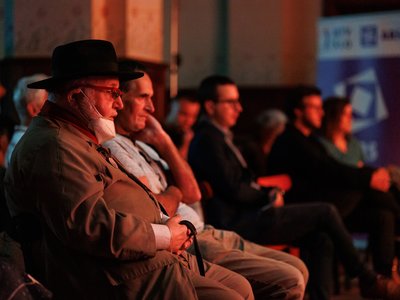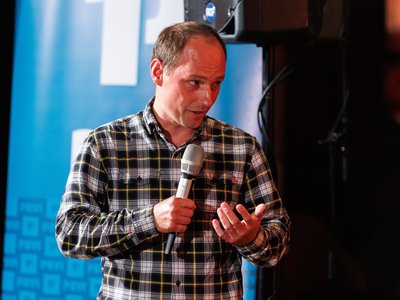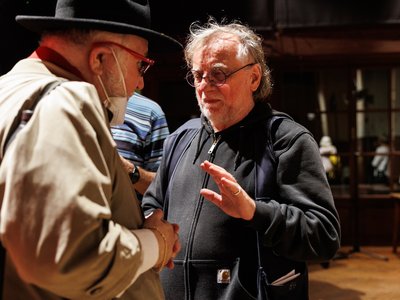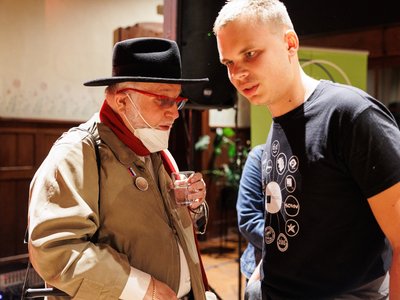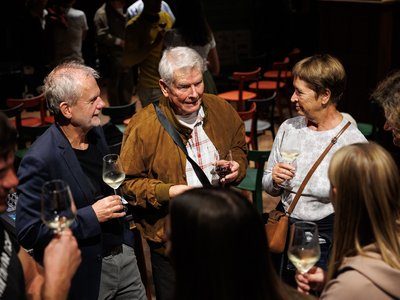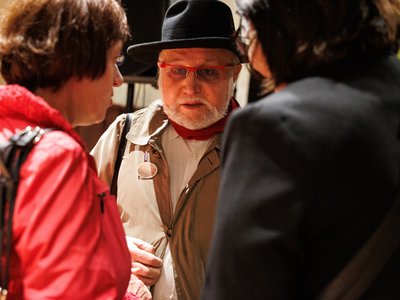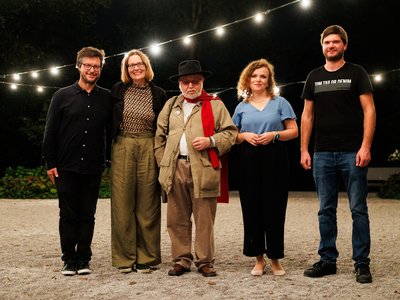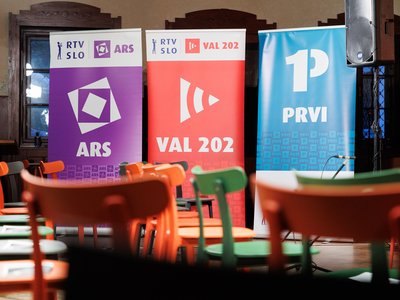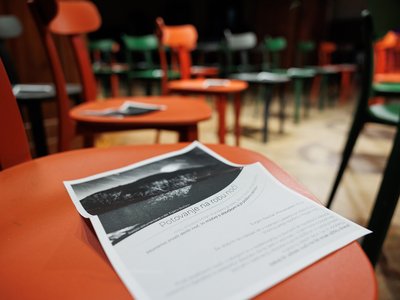“My friend Milan Kundera said that loving one another isn’t enough. We must also know how to share the night. I and the nightingale, we share it fairly.”
Evgen Bavčar has a special ritual. For over forty years, he has been recording the nightingale singing on May nights in his hometown Lokavec near Ajdovščina. The nightingale tells dr. Bavčar he isn’t alone in the dark. Yet this is not only a story of their coexistence. Under the nocturnal cloak, in duet and in tandem with the nightingale, the story spreads its wings from Lokavec to Capri Island, opening reflections on blindness and blinding, existential closeness and distance, the situation of the blind across time and the question: why should the pleasure of night not be equal to the pleasure of day?
“When I was recording the nightingale for many years, here and in other places, a friend pointed me to the book Villa San Michele by Axel Munthe. I was taken by the text, I started to listen to nightingales in a completely different way; though I already knew that in some places birds are blinded, either nightingales or other species, to make them think it is always night,” says Evgen Bavčar in our radio documentary.
The documentary innovatively utilizes sound not only as a stimulus for perception of individuals for whom it is the sole source of information about the visual world, but also for narrating time, duration, space, the essence of the moment, and human coexistence. Furthermore, the sound conjures various emotions of the protagonist and expands the listeners’ perception of temporal-spatial coordinates of life. The night journey to the break of day raises profound questions about human existence, differences, exploitation, the struggle for justice, the environment, freedom and the intimate desire for duality, the sun and a new spring.
The radio documentary is a joint project between First Program, the Ars, and Val 202 and was recorded in the spring of 2023 in Lokavec near Ajdovščina, on the island of Capri, and in Naples.
Concept by Mojca Delač and Luka Hvalc, screenplay by Mojca Delač, Saška Rakef and Luka Hvalc in cooperation with dr. Evgen Bavčar, director Saška Rakef, dramaturgy Saška Rakef, Mojca Delač and Luka Hvalc, sound designer Urban Gruden.
“When I say the two of us, I also become responsible for another tiny existence warming its next generation nestled in the bush. It reminds me that the sun shone the day before, that the sun once shone for me, too, and that the nightingale, in its melody, transmits to me the light or energy of that sun I had known as a child,” adds Evgen Bavčar.
“Sound was our key guiding principle and the cue for this story. I think it’s clear that for Evgen Bavčar, it is much more than just an auditory stimulus. It is the world, colours, people, images. It is orientation in space, time, and relationships. And him? A personified inspiration! Our story was born spontaneously during research and first conversations in Ajdovščina. Quietly, it pecked so hard at the creative shell that it broke free and took flight. We’ve been on a truly incredible journey which, I dare say, has spoken to all the creators deeply and intimately. I hope it will also reach the listeners this way!” said Mojca Delač from Radio Slovenia’s First Program about making the radio documentary.
Polymath Evgen Bavčar holds two PhDs. He is a philosopher, artist, essayist, writer and an advocate for the rights of the blind. He lost his sight at the tender age of eleven, and so his world of light and visual perception remains encapsulated in the memory of his homeland, and his native Lokavec. For many years, dr. Evgen Bavčar has been writing his story around the world, especially in Paris where his studies and research took him in the 1970s already. For Evgen Bavčar, sound is the companion drawing the contours of his surroundings, the world, people, events and sensations.
The public presentation of the radio documentary took place on Tuesday, 3 October 2023 at 19.00 in the Švicarija venue in Ljubljana. The same day, at 20.00 hours, the documentary had its premiere on the airwaves of the First Program, and later in October also on the Ars Program and the Val 202. After airing it is available on the podcasts of Radio Slovenia, and here:
Journey at the Edge of the Night - Libretto - English translation
Journey at the Edge of the Night - Libretto - Italian translation
Journey at the Edge of the Night was also part of the Avdiofestival event organized by Radio Slovenia, taking place on Monday, 9 October 2023 at the Cukrarna venue in Ljubljana. There, we were exploring the sound lights of the night, thinking the role of contemporary radio for those who cannot see, and the creativity of the blind and visually impaired. More information is available at the website of the event.

